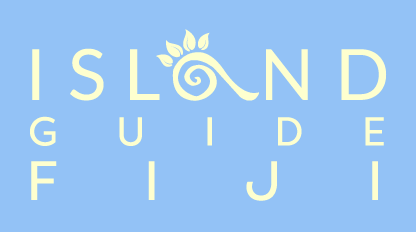
-










Weather
The Fijian "winter" or "dry" season is from April to October and is a good, cooler time to visit. 

































 When to Travel
When to TravelThe Fijians “winter” or “dry” season from April to October is a good time to visit, as the dry season means that temperatures are cooler, rainfall and humidity levels drop, and there is less risk of tropical cyclones.


































 Weather and seasons
Weather and seasonsCentrally located in the mid-South Pacific, Fiji enjoys a mild, tropical climate all year round.
The average summer (November-April) high often reaches 30C (86F), while the average winter April-November low is 20C (temperatures are typically lower in elevated inland areas).
Since there is such a diversity of climates throughout Fiji, the weather from West to East varies considerably. The West for example is much drier than Suva in the East of Viti Levu and the lush islands in the North, including Taveuni, which is known as Garden Island.
Peak Season
The dry season is from May until October. However, the temperature still averages 22 °C (72 °F) but can feel a lot hotter as the humidity is often as high as 80%.
The low season (wet season)
The wet (or cyclone) season is from November until April. Rainfall is prevalent in all districts, during which time cyclones are expected, perhaps once every two years. The last one was category 5, Cyclone Winston in March 2016.
During this time the humidity is very high and it feels really hot. It rains more or less every day. During the wet season the lush rain forest springs to life, and everywhere things are a deep green. River rafting and kayaking are at their peak of excitement and waterfalls are abundant on many islands.


































 Water Temperature
Water TemperatureThis varies between 23°- 26°C (75°-79°F) in the dry season and 26°- 28°C (80°-84°F) in the wet season. The warmer water often brings a plankton bloom that decreases visibility, but can increase the chances of seeing pelagic activity.

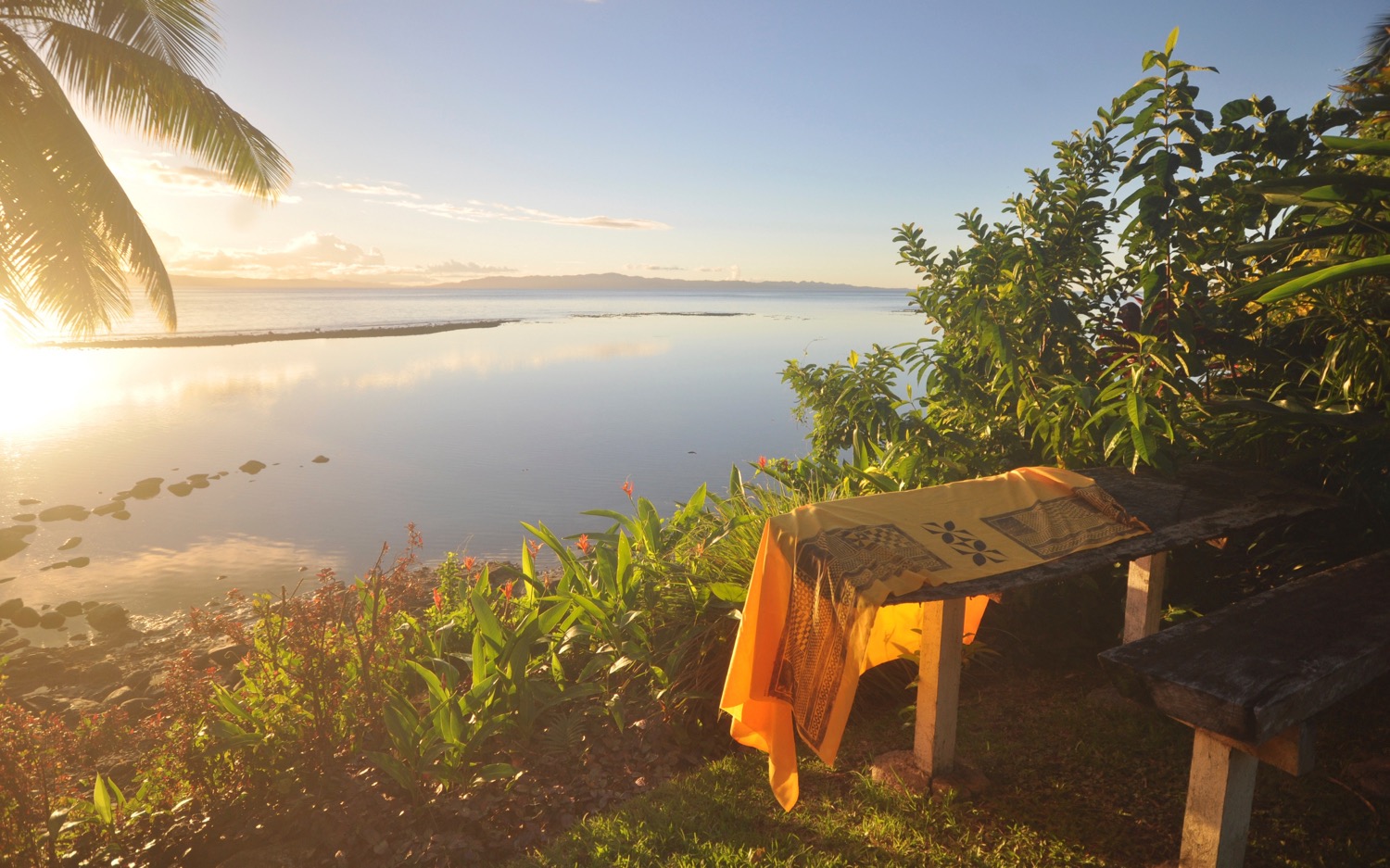
-


















Travel Advice
Here are some tips on how to travel with with minimal problems. 

































 Health and Safety
Health and SafetyDengue fever is contracted through infected mosquitoes, there is no prophylactic cure for this disease at present. We advise you to use insect repellent at all times and cover up, especially at night.
Fiji is free from malaria and other major tropical diseases that are endemic to most tropical countries.
Yellow fever and cholera vaccinations are only required if entering Fiji from an infected area (as designated by the World Health Organisation).


































 Looking after yourself
Looking after yourselfSunburn, dehydration and heatstroke are more. Mosquitoes are rarely a problem in resort areas due to the persistent trades, but during the wet months can be more of a nuisance, especially away from coastal areas. It is unusual in the outer islands at any time of year to have continuous rainfall you will experience brief and sometimes strong afternoon or nighttime downpours instead.


































 Embassies and visas
Embassies and visasUK: 34, Hyde Park Gate, London SW7 5DN, UK. Telephone: (020 7584 3661); Telefax: (020 7584838); E-mail:fijirepuk@compuserve.com.
Fiji: Fiji Visitors Bureau (Head Office), Thomson Street, PO Box 92, Suva; Tel: (679) 3302433; Fax: (679) 3300970/ 3302751; Website: BulaFiji.com; Email: infodesk@fijifvb.gov.fj.
Visa requirements: Most travellers are automatically issued a four-week tourist visa upon arrival free of charge. This includes travellers from most Commonwealth countries, most north, south and central American countries, western Europe, Israel and Japan, with subsequent extensions also free of charge.


































 Timezone
TimezoneGMT +12 hours (worth checking as this fluctuates by an hour throughout the year depending on daylight saving).


































 Currency
CurrencyOne GBP buys three Fijian dollars. Major credit cards and travellers cheques are widely accepted.


































 Economy
EconomyFiji’s economy is based on agriculture and tourism. The sugar and tourism industries provide employment to over 50% of the labour force with that figure looking to increase due to the influx of resorts and hotels being built in the West. A variety of other crops are also produced including coconut oil, cocoa, ginger and kava.


































 Travelling with kids
Travelling with kidsFijians are amazing with kids! They are naturally incredibly patient, stern and caring. You won’t have problems finding things for them to do or people to look after them.

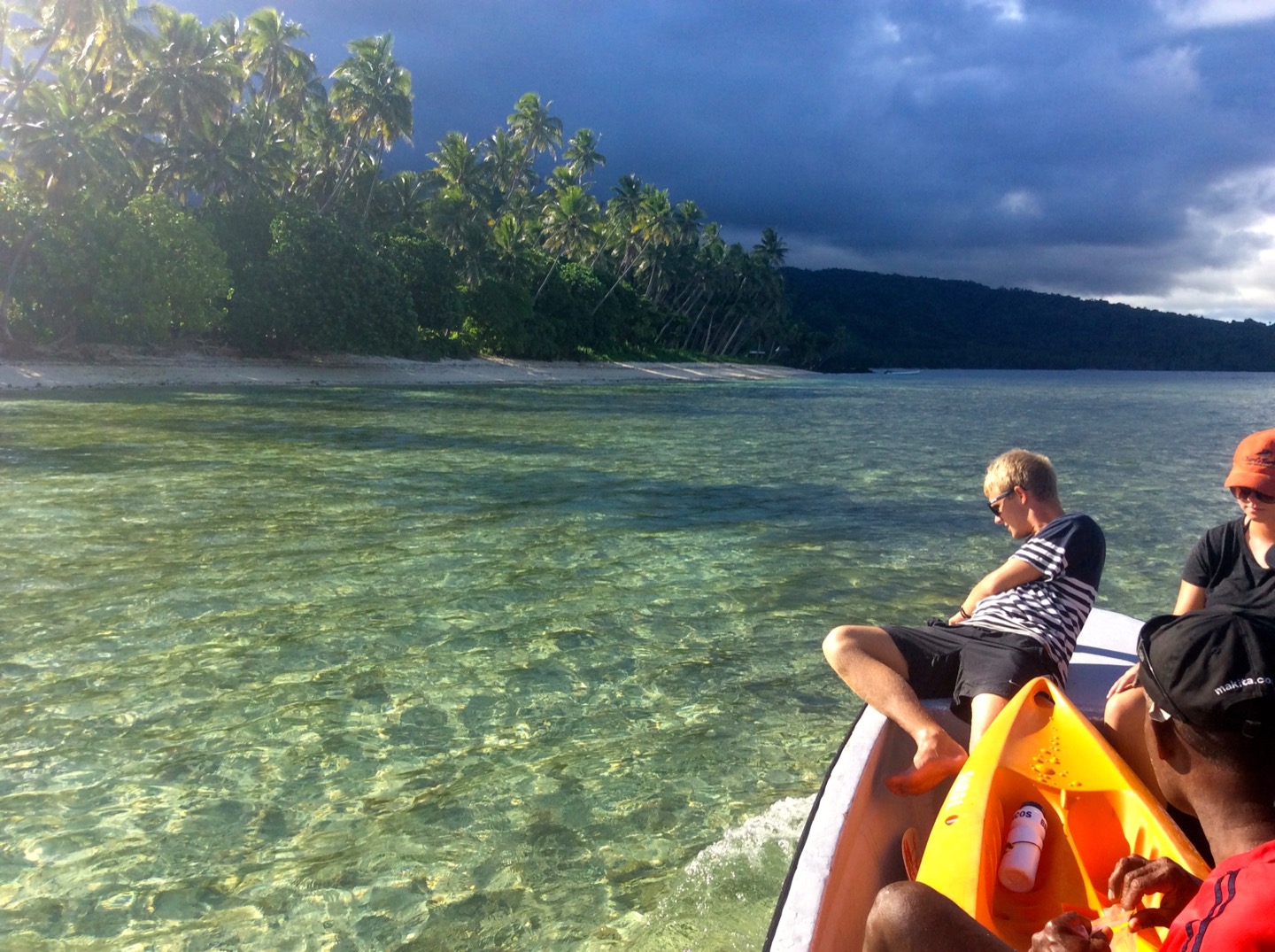
-


















Activities
We have hand-picked what we think are the best activities if you are keen to go local and prioritise the environment and culture. 

































 Scuba Diving
Scuba DivingFiji offers water activities aplenty, including some of the best scuba diving available in the fascinating underworld of the South Pacific waters. As one of the top ten dive destinations in the world, Fiji is “the soft coral capital of the world” thanks to the stunning Rainbow Reef located just off Taveuni.
Diving season
The dive season is all year round. April to October is the main season for scuba diving in Fiji in terms of diver numbers, although the visibility tends to peak between the months of July and December when the water is cooler (sometimes as cool as 22°C).
November to April are in fact Fiji’s summertime and when the seas are at their warmest – around 30°C. This is also rainy season and carries a greater risk of cyclones.
Fiji reef summary
- Water temperature: normally 28 – 30°C
- Good for: Large animals, visibility and beginner divers
- Not so good for: Wreck dives
- Depth: 5 – >40m
- Visibility: 15 – 40m
- Currents: None to very strong
- Surface conditions: Mostly calm but can be choppy further from sh
ore particularly during July to September - Experience level: Beginner – advanced
- Number of dive sites: >150
- Access: Fiji live aboards and resorts
Currents
Currents are the lifeblood of Fiji’s reefs, kick-starting the food chain by sweeping nutrients to both corals and fish alike. Fiji is known as “The Soft Coral Capital of the World” and when the current flows the corals bloom into fabulous displays of colourful splendour. The currents also affect the water’s visibility which can be the best around, with incoming currents bringing clear sea water into the lagoons and outgoing currents removing any cloudy lagoon water.
The Somosomo Strait almost single-handedly earns Fiji its title as the “Soft Coral Capital of the World”. It runs between Taveuni and Vanua Levu and is one of Fiji’s best known dive destinations serving both dive resorts and live aboards.
Many divers go to Taveuni just to witness the excellent soft coral blooms that occur when the current is just right. Normally the currents are little more than a helping hand allowing you to fly along the wall at ease, guiding you past some of the most wonderful proliferation of soft corals on the planet. Large bushes of pink, brown and orange span out to capture the passing nutrients and create the remarkable spectacles of colour that portray Taveuni’s scuba diving.
When the current is present to any reasonable extent the grateful corals expand to their full. The nutrient-rich waters also promise plenty of pelagic fish species. Barracudas, a variety of reef sharks and manta rays, are found throughout. Rainbow Reef and Great White Wall have been noted in the ‘Top 10 Dive Locations in the World’ by U.S. Divers magazine.
Dive areas
Taveuni
From luxury eco resorts and remote eco-hideaways to fabulous live aboards, Taveuni’s scuba diving really does offer something for everyone. Rainbow Reef – One of Fiji’s best-loved dive sites is located just a stones throw away. When the current is flowing just right the soft corals emerge in their fullest display of colour – giving the site its name. Drifting along past this profusion of life and colour you can spot all manner of fascinating marine life on this bejewelled reef and plenty of big stuff cruising around the vicinity.
Kadavu
Away from the big resorts where life can go at the pace you want and where the diving feels like the last frontier. Eco-friendly resorts, local culture and plenty of breathtaking dive sites in and around the well-known Great Astrolabe Reef.
Viti Levu
One of Fiji’s best kept secrets is the top quality diving at Rakiraki with colourful pristine reefs and an abundance of fish. Special mention too must go the shark feeding dives conducted in the waters off Pacific Harbour. You can have heart-stopping moments with the bosses of the ocean and just off Fiji’s main island. The Best Shark Dive in the World.
Beqa Shark Dive
Cageless shark diving with Beqa Adventure Divers. A 4m tiger shark will no doubt take your breath away during this unique experience. Beqa Adventures have sole rights to dive Shark Reef, an innocuous hard coral reef just offshore at Pacific Harbour, along the south coast of Fiji’s main island, Viti Levu.
Every diver that dives this reef must pay a $10FJD which goes to the two local villages to compensate those villages for not fishing the reef and for protecting it from other fishing and diving boats (Shark Reef Marine Reserve). Shark feeding has taken place here every week for over six years now so shark encounters of one kind or another are guaranteed.
Beqa Lagoon
Just south of Viti Levu lies Beqa Island, one of the most popular Fiji scuba diving destinations for those seeking to avoid a domestic flight. There are a range of good dive sites around the lagoon and the islands that fringe it. You can expect pinnacles, plenty of soft corals and even wreck dives.
Seven Sisters
Seven Sisters has a huge abundance and variety of hard and soft corals and tropical reef fish making this a marine biologists dream.Frigates Passage
This is a one of Fiji’s best dive sites. After 45 minutes by boat you’ll arrive at the remote location of Frigates Passage. The coral cover and health of the wall at Frigates is second to none. Giant gorgonian fans and ancient black coral bushes offer shelter to hundreds of fish species. Subject to some pretty exciting currents, this is a dive for experienced divers.
Caesars’ Rocks
A series of spectacular coral heads riddled with tunnels and caverns. Covered in soft corals of every imaginable color! Great dive site for macro-photography. This is a stunning dive site that enchants all visiting divers. You will come across nudibranchs, lionfish, leopard sharks, sea snakes, clown triggerfish, sweetlips, shrimp, just keep the imagination going….
Species to look for
- Manta rays
- reef shark
- white and black tip sharks
- Humphead Wrasse
- Neudibranche
- Trumpetfish
- Scorpionfish
- Boxfish
- Lionfish
- Turtles
- Surgeonfish
- Bannerfish
- Angelfish
- Moral Eels
- Seahorses
- Hundreds of soft coral species
- Lobster
- Octapus


































 Kayaking
Kayaking

































 Hiking
Hiking

































 Snorkeling
Snorkeling




































































 Voluntourism
VoluntourismGet involved in community led, short-term projects which are easy and effective. Explore and learn about the special biodiversity of Fiji with local people. You will leave knowing you’ve given back to this stunning island.
- Marine
- Solar
- Education
- Handicraft
- Build
- Plant

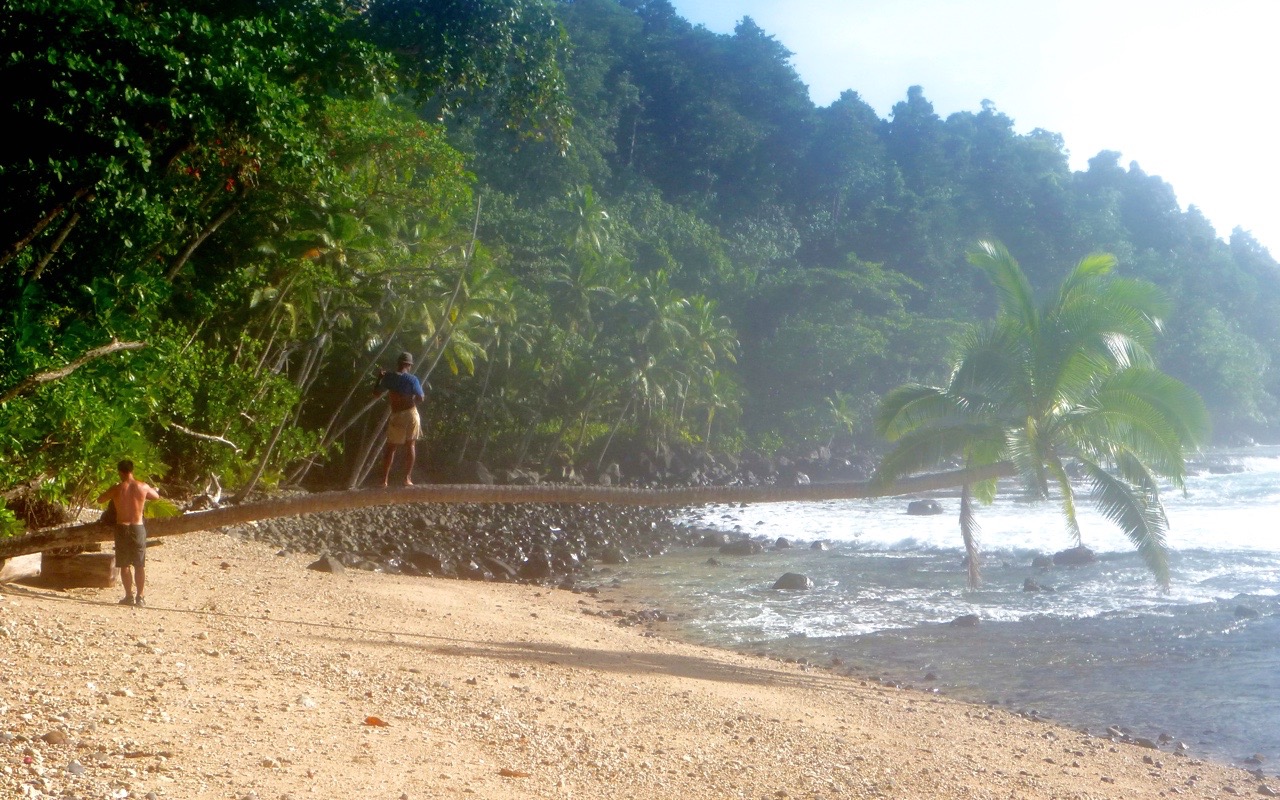
-


















Culture
I have often been asked: "Fiji? Culture? What culture, Europe has culture!" Having been in Fiji for so long, I am always surprised that people don't know about it's rich cultural heritage.


































 History
HistoryFiji was probably first settled three and a half thousand years ago, then the Dutch explorers were the first Europeans to arrive in 1643.
Further exploration was made by Captain James Cook in 1774 and by Captain William Bligh who sailed through the group after the mutiny on the Bounty.
In 1835 the missionaries arrived, introducing Christianity and ending cannibalism. Food has long been a central issue when it comes to European attitudes to the South Pacific, particularly one item: human flesh. In an environment where there was little or no access to red meat, cannibalism was a key ingredient of survival. The truth is that Europeans found such a thrill in the threat of cannibals that it is difficult to untangle how widespread it really was.
In the 16th century, the French philosopher Montaigne pointed out that we were often far more barbarous than those we called cannibals, but his lone voice was drowned out in the 19th century stampede of millenarian preachers determined to write memoirs with titles like My Life Among Cannibals. Throughout this time, Fijians were involved in internal wars.
The leader of one of the two powerful groups, Cakobau became a Christian in 1854 and was named Paramount Chief of Fiji.
In 1874 Fiji was ceded to Great Britain by Cakobau the Deed of Cession was signed at Levuka, then the capital on October 10, 1874. The first group of indentured labourers arrived from India to work on the sugar cane plantations around this time in 1879.
Fiji attained independence in 1970 and declared itself a Republic on October 7th 1987. A draft constitution was introduced for a single chamber parliament with 71 seats.


































 Values
ValuesI have often been asked: “Fiji? Culture? What culture, Europe has culture!” Having been in Fiji for so long, I am always surprised that people don’t know about it’s rich cultural heritage. It’s not teeming with art movements, ancient architecture and ballet but it’s rich in a different culture, one that the west has long since forgotten – it’s about people. On this page you will learn about:
In Fijian life respect and community spirit runs deep in their culture. Kava plays a huge role in everyones life both directly and indirectly. Fijiians have strong values and ideals and are often know to be great at Living for the day!
Village customs are often but not always adhered to but elders are very aware of ideal behaviour or “Vakaturaga”. In outer island villagers Fijian Food is traditional but many alternatives such as super noodles and breakfast crackers are changing the old-fashioned way of life. Guests can find some of the ways of life culturally challenging such as the language barrier. How will you be part of this culture?


































 Respect and community
Respect and communityAll over Fiji there is a strong sense of respect and community – you can’t walk past a house without being beckoned in to share food, this has even happened to me in the city of Suva! Values and ideals too are still firmly in place as generations talk and live with each other allowing for the flow of inter-generational knowledge and respect. It’s a special place, full of soul and the warmth of the Fijian people is overwhelming, watch a video of friends singing.
On this page you will learn how life in Fiji is now, relatively unchanged for hundreds of years. You will also read about the challenges that face island life.
Fiji is a vibrant mix of mainly indigenous Fijians and Indo-Fijians but there is also a tapestry of European, Chinese, and other nationalities. They are proud people, which comes across in their carriage, their way of looking you squarely in the eye, and their respect for tradition – all this manifests itself in their hospitality.While many other South Pacific cultures are dying or long dead, Fiji’s way of life remains strong and resilient in the face of outside influence.


































 How will you be part of the culture?
How will you be part of the culture?During your stay you will be part of these communities and have a chance to really live the village lifestyle with sensitivity to their values and traditions.
The Chief and the Headman (Turaga ni Koro) bind the village people together, you will notice how the villages are so well kept. This is thanks to a productive network lead by these two important village figures.
A ceremonial presentation will be performed upon your arrival to officially welcome you into the village and let everyone know you are staying for a while. We will send you an information pack before departure for Fiji to prepare you for the cultural expectations.


































 Kava
KavaThe very popular drink Kava, yaqona (“yang-go-na”), also locally known as ‘grog’ is a plant root, a drug, the South Pacific equivalent of alcohol. From village disputes and major political decisions to singing and relaxing, the kava bowl is where it happens.
It is a peppery, earthy tasting drink made from the root of the pepper plant. Its effects include a numbed tongue and lips (usually lasting only about 5-10 minutes), relaxed muscles and dizziness are sometimes side-effects while a lethargic buzz is the primary sensation.
Kava is mildly intoxicating, especially when consumed in large quantities or on a regular basis. Kava drinking in Fiji became popular during the fall of cannibalism, and originated as a way to resolve conflict and facilitate peaceful negotiations between villages. It should not be consumed alongside alcohol.
A complicated series of ancient traditions surrounds the drinking of grog and the wooden kava bowl is so fundamental that the Parliament has a ceremonial bowl around which members meet. Business deals are cemented with yaqona, as are social events.
If you are honored by an invitation to a kava ceremony, sit where you are told (sitting positions are important). Remember to say “bula” and clap once before you drink from the kava cup, and clap three times afterwards.
“We sit cross-legged on the floor, it is apparent that I am the only woman, I am told later that women tend not to drink kava as much as men. However, I feel very welcome as I am beckoned to sit next to the chief.
The spokesman (the intermediary between villagers and guests and the chief) claps twice, very loudly, and leans forward to touch the bundle of kava roots I have bought as a gesture of good will, he pushes it towards the chief, who remains silent. The spokesman then launches into a seemingly complicated welcome speech which is intended to introduce me to the village Chief, my reasons for visiting, who I’ll be staying with and for how long I will be staying for. When he has finished, both men clap three times. I then thank them for the welcome and explain why I’m there in my own words. When I finish, I clap my hands twice.”


































 Values and ideals
Values and idealsThe indigenous culture is an active and living part of everyday life for the majority of the population. However, it has evolved with the introduction of vibrant and old cultures including Indian, Chinese and European culture, and various cultures from the Pacific neighbors of Fiji; in particular the Tongan and Rotuman cultures. The culture of Fiji, including language, has created a unique communal and national identity.
The way one speaks and their stance among others conveys whether they are either veidokai (respectful) or veibeci (disrespectful). When spoken to by a man of status one normally ends his response with the word saka (sir).
To share with others and care for one another are very basic elements to the term veikauwaitaki (to recognise and have feelings for).
Fijians among themselves normally make an effort to make outsiders feel at home. They are cautious to directly and immediately ask from where a person comes or what their name is. The principle that one should know and recognize all people and establish kinship or other social links with them, whether real or putative, is an essential element of the Fijian value system which allows a visitor to be accommodated with little stress into a community.


































 Living for the day
Living for the dayIt is clear to see that life is to be lived for today. A person who worries about the future is said to be lomaocaoca. Thereis no need to panic or be upset if things did not happen the way one wanted. What is really important is to be happy and contented now.
There is an expressino to convey the idea that keeping things is pointless because you never know what will happen the next day and one does not live long enough to use all he has accumulated. “Maroroya me qai kena na baca”.
Too much striving without a break to enjoy one’s effort with others is considered not only bad for ones health, but morally unacceptable. If one is not ambitious, does not strive, there is less chance of being frustrated when one’splans are affected by other people. Many still believe in providence and that things are in adequate supply.
“If you don’t get it today you’ll get it another day. If you can’t do it today, you’ll be able to do it another day.” The best way to get along is to take it easy, and not to get worried about what happens later.


































 Ideal behaviour or "Vakaturaga"
Ideal behaviour or "Vakaturaga"This is the most commonly used term for ideal behaviour. It denotes that ones actions and characteristics befit the presence of a chief. It includes veidokai (respect), vakarokoroko (deference), vakarorogo (attentive and complying), yalo malua (humble).
An individual who is labelled vakaturaga in his behaviour knows his place in the society and complies unquestioningly to his various traditionally defined obligations and responsibilities. Their actions are usually focussed on service to others. They achieve respect, acceptance and recognition within their group for being attentive and complying and respectful to those who hold traditionally defined authority over them. They should also act vakaturaga in their interaction with people who are socially lower than them. They should be humble and not arrogant. They are dignified and composed; avoids being drawn into un nescessary confrontation with others and is unruffled by bickering and gossip.
The practice of veidokai (respect), vakarorogo (attentive and complying) and yalo malua (humble) have been considered complacent. Veikauwaitaki (to recognise and have feelings for) has been considered to hinder individual progress. Vakarokoroko (deference) has been considered to be condescending and servile.
Thus it is not surprising that these Fijian values and personality characteristics, under the demand of the political and economic systems, remain to some degree as ideals. However, these established traditions are slow to change and old values and beliefs remain and continue to provide inspiration to many.
A person who is veidokai doesn’t impose without consultation any idea or action beyond his traditionally defined boundary of social expectation.


































 Village custom
Village customTraditional Fijian society is based on communal principles derived from village life. People in villages share the obligations and rewards of community life and are still led by a hereditary Chief.Remove shoes and stoop when entering a home, and quietly sit cross-legged on the pandanus mat. It is polite to keep your head at a lower level than your host’s. It is also very important to respect personal space.
When entering a village, prior consent must be granted. It is expected that one removes bags from shoulders as a sign of respect. Once in the village everyone is on the same level, material assets (thing in bags) are lowered to emphasize this.
Fijians among themselves normally make an effort to make outsiders feel at home. They are cautious to directly and immediately ask from where a person comes or what their name is. The principle that one should know and recognize all people and establish kinship or other social links with them, whether real or putative, is an essential element of the Fijian value system which allows a visitor to be accommodated with little stress into a community.
Sulus are worn by all women and shoulders are covered. Swimsuits and shorts are acceptable along the beach but it is important to dress modestly and respectfully when entering the village. It is respectful for women to cover their shoulders and knees – it is best to wear long dresses, skirts, or sulus (rather than shorts or trousers) and shirts with sleeves. Men may wear shorts, trousers or sulus and shirts with sleeves.
In Fijian culture, the head is considered ‘sacred space’ seen as a human’s connection to Heaven. It is best not to cover your head )hats, scarves, bandanas), as it may block this connection. Hats and sunglasses are acceptable along the beach, but when you enter the village please take off your hat and sunglasses, and carry bags in your hands rather than over your shoulders.


































 Womens handicraft
Womens handicraftElders know these skills but they are dying out so workshops are organised by NGO’s such as Parners in Community Development, they are popular and are attended by men, women and youths. They tend to be designed to promote the use of local resources to make handicraft products to be marketed to local tourist establishments.
The revival of local and traditional handicraft practices is high on the agenda for NGO’s as they can also be used as an environmentally friendly source of income generation. The main handicraft skills taught at work shops are basket weaving, screen printing, jewellery making (from the natural resources available) and in some cases the revival of the pottery skills.


































 Village Food
Village FoodFood is central to every Fijian’s life and as a nation, they eat a lot! The land is fertile and it is easy to grow just about anything in most places.
Lovo is the equivalent of the Sunday roast. Prepared in the morning, the fish, dalo leaves, chicken and other local produce is wrapped meticulously in leaves to keep it together and add to the slow cooking process for about four hours in an underground oven.
This picture shows the wrapped food being put into the earth oven (hole!) ready for cooking.The flavour is smokey and, being slow cooked, the meat falls off the bone. It is served with lolo, (coconut milk) and dalo leaves with Lolo (palusami).
The introduction of super noodles and breakfast crackers has been a problem for the health of islands for some time now. They are cheap and easy to cook with or snack on and are often bought with the money raise at market from selling fresh fish. NGO’s put the awareness raising of non-communicable diseases high on their agenda as heart disease and obesity rates are rising annually.


































 Language
LanguageExcuse me (pronounced “chilou, chilou”)
If you must pass someone, walk between two people in conversation, each behind/over someone else, or accidentally touch someone’s back or head, it is polite to say “tulou, tulou” (excuse me).
Bula!
Literally means ‘life’ or ‘health’. It is used as a general greeting (the equivalent of ‘hello’) and signifies wishing good health and life to the person you greet. Yopu may also hear people say ‘Bula Vinaka!’ (‘good life’ or ‘good health’). It is polite to greet everyone you come in contact with.
Vinaka!
Literally means ‘good’, but is also used as ‘thank you’. ‘Vinaka vakalevu’ means ‘thank you very much’. The appropriate response if someone thanks you (equivalent to you’re welcome’) is also ‘vinaka’. Use ‘vinaka’ to respectfully decline an offer (‘no, thank you’).
- Goodbye, goodnight or sleep – moc! (pronounced ‘mothay’)
- Yes – io
- No – sega (prounounced “senga”)
- no worries – sega na leqa (pronounced “lenga”)
- Please – kerekere
- Go – lako
- Come here – lako mai
- Happy – marau
- Laugh – dredre (pronounced “ndredre”)
- Sing – sere
- Sit – dabe (pronounced “dambe”)
- Eat – kana
- Fish – ika
- Water – wai
- Man – turaga (pronounced “turanga”)
- Woman – marama
- Name (pronounced “yatha”)
- Village – koro
- Clan – mataqali (pronounced “matangali”)
- Church – Lotu
- School – koronivuli
- House – vale
- Kava – yaqona (pronounced “yangona”)
- Farm – teitei
- Hot – katakata
- Cold -batabata (pronounced “mbata-mbata”)
- Rain – uca (pronounced “utha”)
- Sun – siga (pronounced “singa”)
- Chilou – One must carry himself low, either squatting or sitting or standing in a bowing or stooping position when among people of rank or unknown guests.


-


















Food
Fiji isn't famed for its cuisine as Sri Lanka and Vanuatu are. However, if you go local some wonderful fresh dishes will surprise you. 

































 Fijian Cuisine
Fijian CuisineNo true Fijian dining experience is complete without a traditional “lovo” feast. Here, fish, chicken, pork and vegetables are wrapped in banana leaves, then slowly cooked for several hours in an underground oven heated with rocks, producing a succulent and slightly smoky flavoured dish. Roasted cassava, yams, octopus, reef fish, pineapples and tiny sweet bananas are examples of some of the local food available.
However Fiji has adopted a range of exotic multi-ethnic culinary influences, from as far afield as India, Australasia, America, Korea, China, Japan and Europe. Suva is the place to dive out to experience the best of this colourful collection of foods.

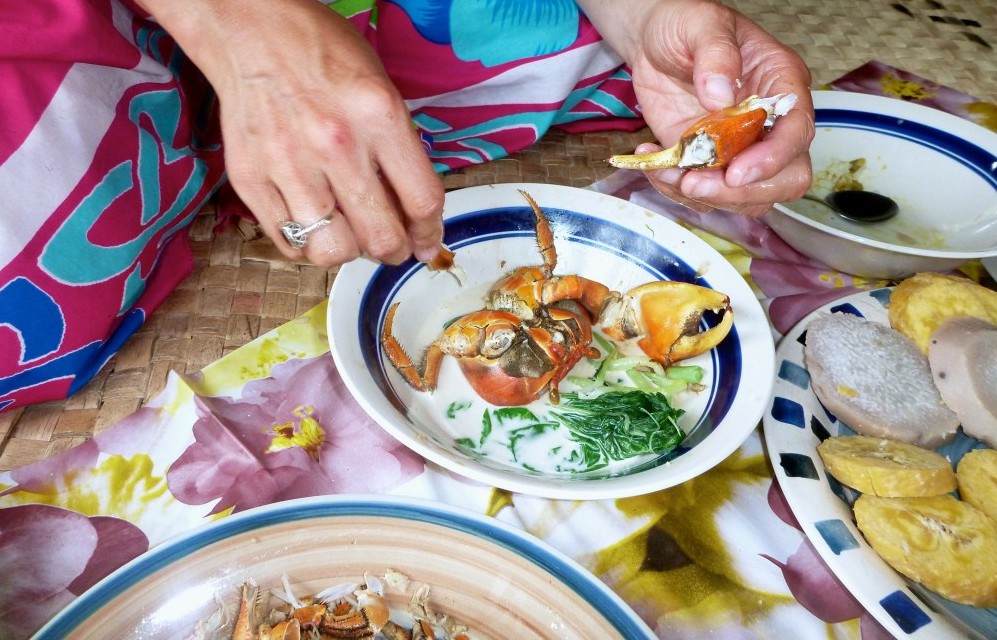
-


















Getting Around
If you know how, it's easy. We are here to show you how! 

































 Local Travel
Local Travel‘Fiji time’ is a well known saying and philosophy. Rarely is transport on time but you’ll get there in the end. Buses, taxis, planes, helicopters and ferries transport people between the islands.

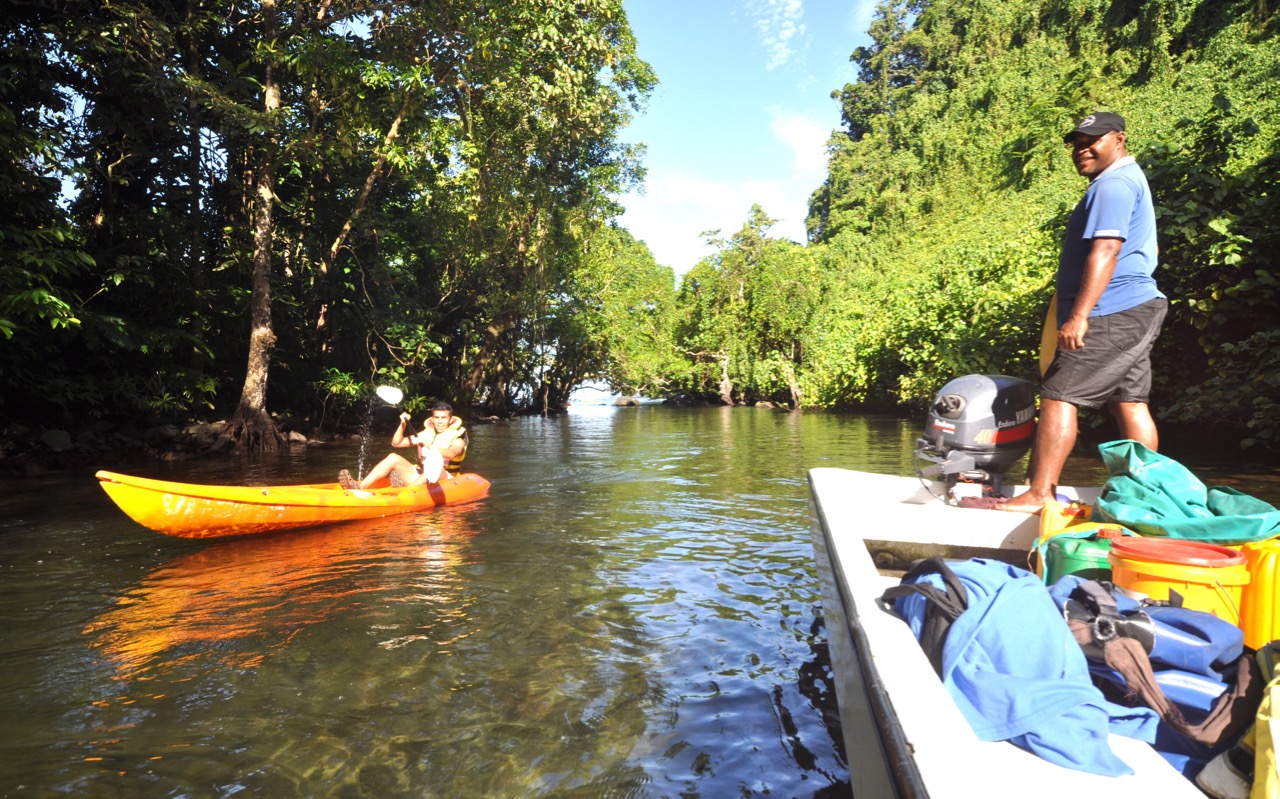
-


















Getting There
The remoteness of the islands has been beneficial in preserving the environment and culture of the 333 islands. Here is some advice on how to get here. 

































 International flights
International flightsAir New Zealand, Korean Airlines, Jet Star, Virgin, Air Niu Guinea, and Fiji Airways are the main carriers with direct flights from Los Angeles, Hawaii, Auckland, Sydney, Melbourne, Brisbane and Tokyo.
The most direct way of getting to Fiji from Europe is via South Korea (Seoul which normally offers a free five start stop over) Los Angeles and Hong Kong.
Flying times:
- USA: 12 hrs
- Hawaii: 6 hrs
- Tokyo: 11 hrs
- Seoul: 10 hrs
- Sydney, Australia: 4 hrs
- Melbourne 5 hrs 40 mins
- Brisbane, Australia: 4 hrs 15 mins
- Auckland:2 hrs 50 mins
- Wellington: 3 hrs
- Tahiti: 3 hrs
- Cook Islands:3 hrs
- London: 26 hrs
- Los Angeles 11 hrs

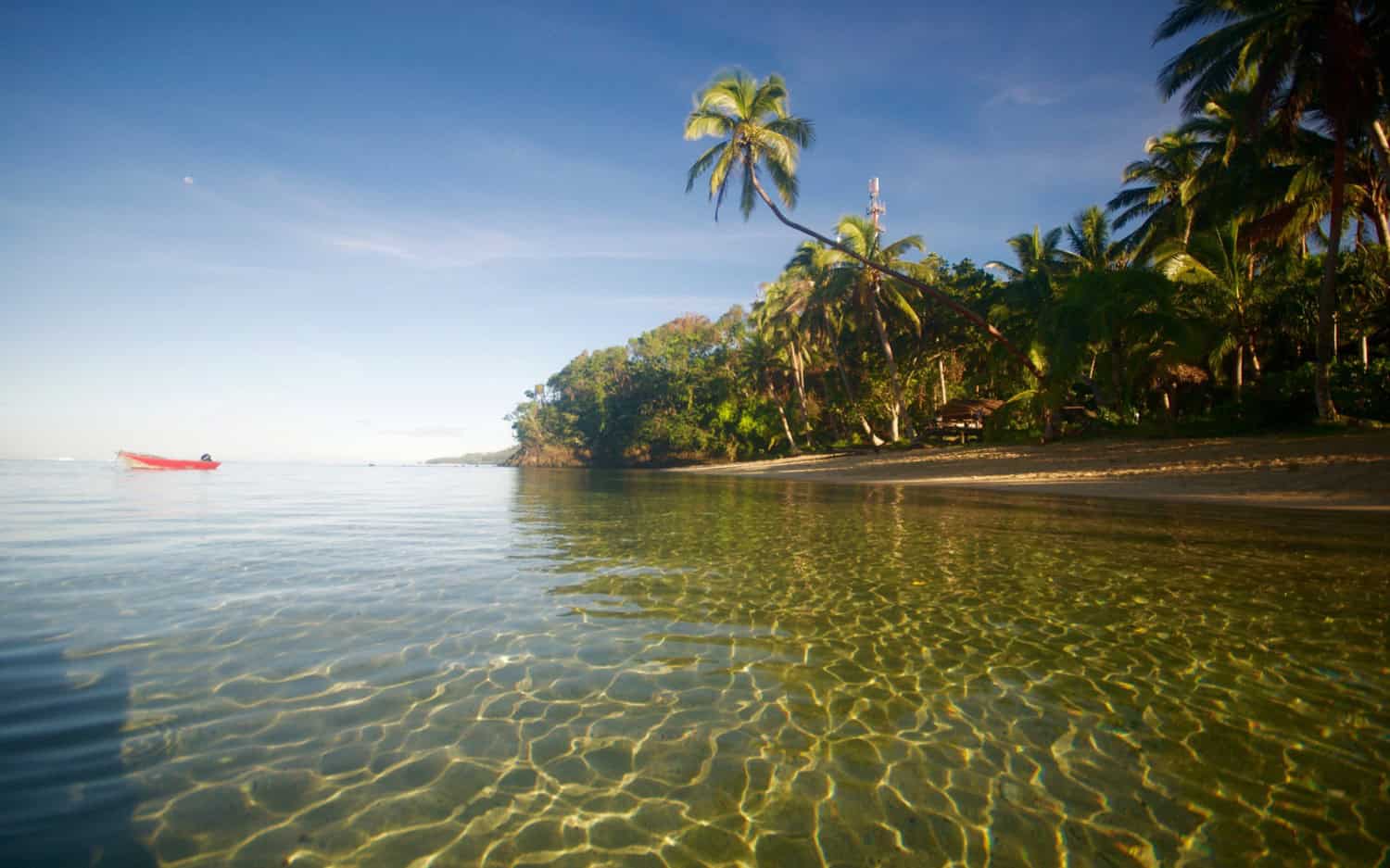
- Choose An Experience
- View Another Island



